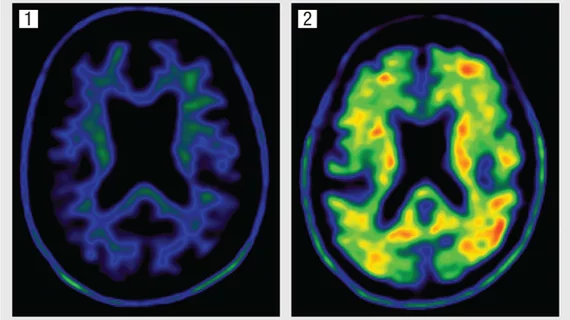Amyloid load (AβL) imaged in vivo using [18F]Florbetapir PET is a more sensitive biomarker for measuring the global amyloid (Aβ) burden compared to composite standardized uptake value ratio (SUVr), reported authors of a Sept. 6 Journal of Nuclear Medicine study.
Longitudinal studies analyzing composite SUVr in Alzheimer’s disease (AD) patients have produced varied results compared to the success of cross-sectional studies. This results in low power to identify biological variances in amyloid concentration, wrote first author Alex Whittington and colleagues.
“A more sensitive outcome measure from static [18F]Florbetapir PET images which quantifies the global Aβ burden could reduce variability and therefore increase the probability of detecting real biological effects,” wrote Whittington, with Imperial College London Hammersmith Hospital Campus in the U.K., and colleague.
The team evaluated AβL on cross-sectional and longitudinal data taken from 796 patients involved in the Alzheimer’s disease neuroimaging initiative. Subjects consisted of 211 controls, 223 with early mild cognitive impairment, 204 late mild cognitive impairment and 132 with AD.
Comparing the distribution of AβL in the above four groups to analysis applied to composite SUVr measures, the effect sizes in all but one group were higher for amyloid load compared to composite SUVr—mean difference in size was 46 percent.
“These results provide evidence that AβL will be a valuable outcome measure in future Aβ imaging studies providing a substantial increase in power over currently employed SUVr methods,” Whittington et al. concluded.

